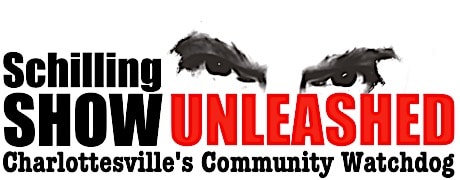Guest Editorial: The Corner mosaic proposal and Charlottesville’s “negligent” BAR
by: John Pappas
For the past four years Charlottesville and the University of Virginia have become my home.+ Forever, the lessons and experiences that this place has afforded me will remain cherished memories.+ It is through a desire to contribute back to this community that I envisioned an art project that would enable me, as well as dozens of other volunteers, to give back to the community that has fostered us for so long.
However, the Board of Architectural Review (BAR) and lately representatives of City government have turned my efforts into an almost impossible battle.+ By denying my project, stalling their decision, sending me on wild goose chases, ignoring vocal community support, depriving me of a legally mandatory hearing, truckling to political games, inventing rationalizations for my denial of a “pre-application conference,” and intimidating me for voicing grievances against the BAR, the BAR and the Director of Neighborhood Services have all but derailed my efforts.
The project I envisioned was to reinvigorate the Corner district, specifically the intersection of University Ave. and 14th Street, by seamlessly integrating a colorful brick and stained-glass mosaic on what has always been an ugly, squalid, gray wall.+ Funded by an honor society that I led and designed by an art student at U.Va., the mosaic highlights some of the best parts of Charlottesville and in its theme evinces the many wonderful interconnections between the U.Va. and Charlottesville communities.+ My hope was to take this literal intersection of the two neighborhoods and create something that would enliven and unite them by showing the many wonderful ways the two communities interconnect.
Even more so, the mosaic would be made by both students and Charlottesville residents.+ So, in both its theme and construction the project would help unite the two communities and hopefully turn what once was a dark, dirty intersection into a dynamic, beautiful and unifying junction.
And yet I have faced nothing but trials and tribulation from the city government.+ Because the wall is in what is considered a “historic” district, any change must be approved by the Board of Architectural Review (BAR).+ Having heard nothing but support and endorsement for the project, when I first appeared before the BAR I thought there was nothing to worry about or at least any problems could be worked through.+ I was very wrong.
The first time I appeared before the BAR it seemed confused and unsure of what to do.+ Though unable to give any discernable reason for its ambivalence, the BAR forced me between letting them vote to deny the project and deferring the vote.+ The reason they gave to defer was so I could, “talk to the public,” especially the Corner Business Association, so that I could come back with documented community support.+ Thinking that the members of the BAR simply wanted to make sure this was a project that people wanted to see, and already knowing that was true, I started a massive effort alongside the other officers of my honor society to go to each Corner business, art student committee, administrator and professor and amass a collection of emails and letters supporting the Corner mosaic.
I also came to learn that the Director of the Department of Neighborhood Services, Jim Tolbert, originally did not support the project in its initial design as a mural, due to maintenance concerns.+ So we revamped the project into a brick and stained-glass mosaic, bringing the original sketch to life.+ After this change he not only supported the project, but pledged to pay for more than half of it.+ As for the Corner businesses, we went to each one in person, pen and paper in hand, and not only were they all behind the project, but the President of the Corner Business Association enthusiastically endorsed it.
So, I appeared again before the Board, confident that they would see how we all fulfilled and exceeded their requests and would undoubtedly approve the project.+ Instead, I was dejected even more than before.+ Did they not trust the stack of supportive emails, comments and letters I presented?+ Did they have maintenance concerns, or doubts of the integrity of the project or worries about the design itself?+ No.+ The Board simply seemed adamantly against changing any part of the “historic” dilapidated wall and rationalized that it had an “industrial” beauty.+ I promise you, if you visit the wall you may find that it has many features; beauty is not one of them.
Were this simply a matter of not agreeing with the Board, I would not be so troubled, but when considering the deprivation of respect and of legal rights that I have suffered in my effort to simply give back to my community, I cannot be anything less than appalled.
Firstly, there is the issue of meeting the Board’s request of garnering community support only for it to be ignored.+ Even though my officers and I amassed a stack of documented support that surpassed even my expectations, when I presented them to the BAR its members did not even address them in their deliberations.+ It was as if they never mattered in the first place, and the Board only instructed me on a wild goose chase to prolong its already made decision to reject the project.+ If the Board had no plans of considering community support than it should not have requested I fetch it.+ The BAR is a group of citizens, like anyone else, asked to consider what is best for the community, not some Court that can wheel its supposed subjects to chase it whims, only to ignore the voice of those it should be representing.
Secondly, after being denied by the BAR I was never told that I had ten days to appeal to the City Council.+ In fact I was never told I could appeal at all.+ It was not until a month later, long after the deadline had passed that I found out.
Thirdly, after realizing that the only way I could learn my rights was to read the Code of Ordinances myself, I also found that the BAR never granted me a legally mandatory “pre-application conference.”+ Because the City was paying for part of the project, the Code clearly says that I as the applicant was entitled to this mandatory meeting.+ When I tactfully addressed this concern to Jim Tolbert, the Director of Neighborhood Service, who originally supported the project, he withdrew all support, and said that he would no longer help pay for or even support the project.+ He went even further and rationalized that he was in fact the applicant at that hearing, though I finished the application, created and spearheaded this project all along and it was my name under “Applicant” on the Certificate of Appropriateness Application.+ As if to intimidate, in an email he even warned that I, “refrain from referring to [the BAR] as negligent.”
This is the same man, who after I was denied and suggested moving the project to another wall across the street, out of the BAR’s jurisdiction, said that, “it would be possible but I can not support [sic] due to my working relationship with the board.”+ Even then he would not support the project, I imagine, because he had his own pet projects that needed the Board’s approval and did not want to do anything to rock his “relationship” with the BAR.+ So much for objectivity.
How this beneficent project became entangled in this political, bureaucratic morass is beyond me.+ Where I embarked on a plan to help revitalize and enliven our community, a project that the community was excited about and wanted to see happen, I have only met with opposition and antagonism from the city government.
The only hope for the project is to take it to City Council and entreat that they recognize the project’s beneficent intention and real public benefits.+ I ask that you please join me Monday, June 15 at 7 p.m. at City Hall in addressing the City Council at “Matters by the Public.”+ I have spoken with Mayor Dave Norris, who is on City Council and supports the Corner Mosaic.
Also, please email Charlottesville City Council to voice your support for the project. Your contact with City Council will+ help us overcome these base obstacles to a worthy and+ beautiful+ community-oriented project.










